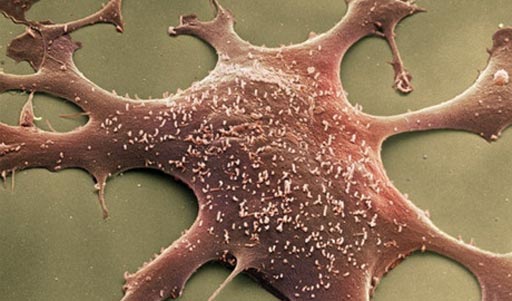Rare Infection in Transplant Recipients Linked to Donors
By LabMedica International staff writers
Posted on 01 Jun 2017
The way in which heart and lung transplant recipients acquired a specific species of bacteria, Mycoplasma hominis, had been previously undefined, and the bacterium was difficult to test for and detect. Originally, this bacterium was considered to reside exclusively in, and be a potential pathogen of the area of the reproductive and urinary organs.Posted on 01 Jun 2017
M. hominis resists most antibiotics, and the three antibiotic treatment recommendations for these infections are neither standard for post-transplant recipient care nor are they standard in therapy regimens for surgical site infections. Heart and lung transplant recipient infection caused by M. hominis may present with, surgical site infection and mediastinitis, which is an inflammation of tissue in mid-chest.

Image: Mycoplasma hominis, the bacteria responsible for a rare infection in transplant recipients (Photo courtesy of the Mayo Clinic).
Scientists at the Mayo Clinic investigated lung and heart-lung transplants between 1998 and July 2015 at the Mayo Clinic. Seven previously unreported cases of transplant recipients with M. hominis infection were discovered. In each case, pre-transplant sputum cultures had tested negative for M. hominis. A literature review since 1950 found 15 cases of M. hominis infection in lung, heart or heart-lung transplant recipients. The way the bacteria spread remained uncertain. Given its normal residence in the genitourinary tract, some speculated that infection arose from urinary catheter placement during the transplant surgery.
Bronchoalveolar lavage samples were submitted for detecting organisms commonly found in immunocompromised hosts undergoing clinically indicated bronchoscopy were tested for M. hominis DNA. DNA was extracted on the MagNA Pure LC instrument using the MagNA Pure total nucleic acid isolation kit. Common testing methods have proven insufficient in identifying the bacteria, but the use of polymerase chain reaction offered a more time-sensitive and specific test for the bacteria. With this method, the scientists were able to focus in on a certain portion of DNA and then create multiple copies to amplify the segment. Polymerase chain reaction detection reduces the time to detect M. hominis to a few hours, compared to the two to five days needed for a culture media test.
Mark E. Wylam, MD, the lead investigator said, “These findings could affect how we approach the evaluation of organ donors. If potential transmission of these harmful bacteria can be identified and addressed, the recipient will face a decreased risk of infection and its serious complications. This study shows us that surveillance of both donor and recipient are important in recognizing M. hominis and the infection it can cause.” The study was published in the May 2017 issue of the journal EbioMedicine.














